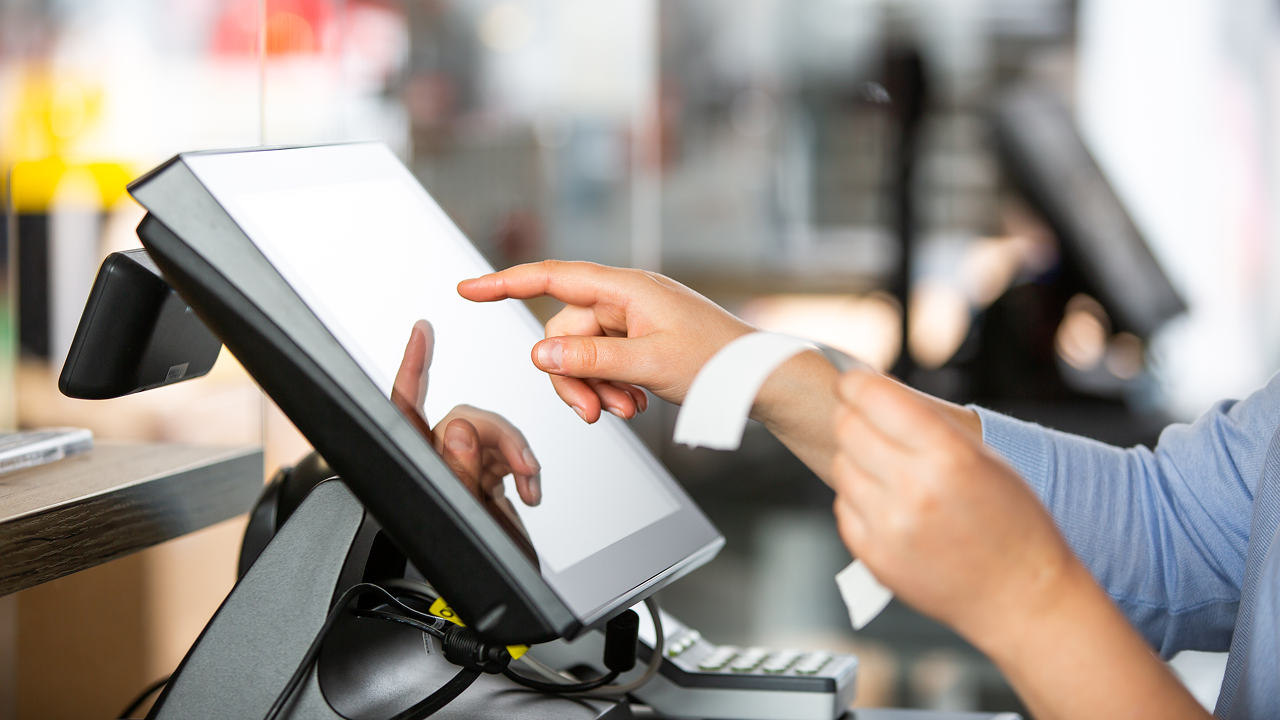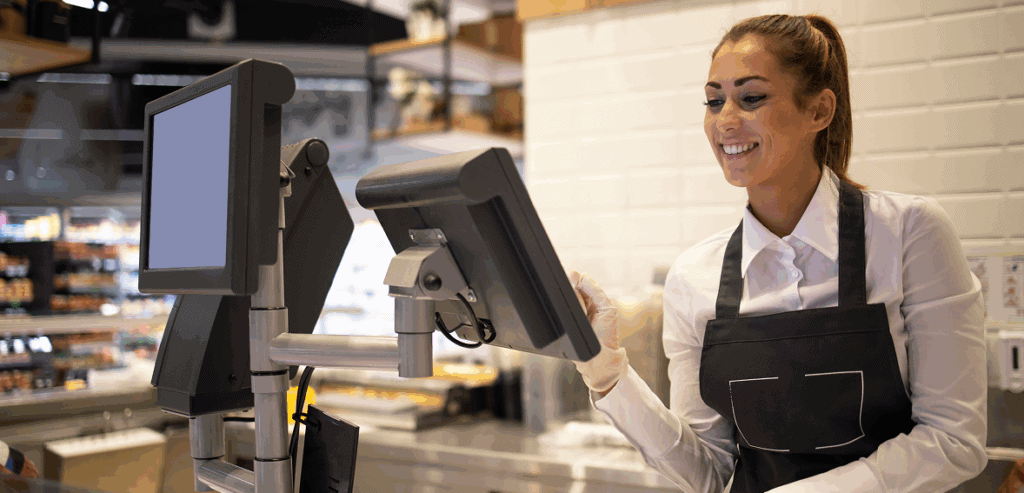
By Tracy Ornelas July 11, 2025
For small and mid-sized businesses in Newark, having the right point-of-sale (POS) system is no longer just about ringing up sales. It’s about adapting to a rapidly evolving retail environment, meeting changing customer expectations, and using technology to operate more efficiently. Whether you’re running a café in Ironbound, a clothing store downtown, or a neighborhood grocery in the West Ward, your POS system is the nerve center of your business.
But technology is changing fast. What worked five years ago may no longer be enough to support growth, maintain compliance, or provide the experiences customers want today. That’s why future-proofing your POS system is not just a smart move—it’s a necessary one. Staying ahead of POS trends helps Newark merchants stay competitive, reduce downtime, and make smarter business decisions.
Why Future-Proofing Matters Now More Than Ever
Retail in Newark is experiencing a renaissance. With new developments downtown, increased tourism, and a vibrant small business scene, there’s more opportunity than ever. But that also means more competition and higher expectations from customers.
Avoiding Expensive Replacements
POS systems are a significant investment. Choosing one that becomes obsolete in a few years means facing another round of installation costs, staff training, and lost time. By planning ahead, Newark store owners can choose solutions that evolve with their business rather than limit it.
Staying Competitive in a Digital World
Customers are increasingly tech-savvy. They want quick checkouts, digital receipts, loyalty rewards, and contactless options. If your POS system can’t deliver, those customers might take their business elsewhere. Upgrading ensures your store remains a relevant and attractive place to shop.
Trend 1: Mobile and Contactless Payments
The shift toward mobile wallets and contactless transactions was already underway, but it accelerated significantly during the pandemic. In 2025, this payment trend shows no signs of slowing down.
Why It Matters for Newark Stores
Many Newark neighborhoods are seeing an influx of younger consumers and tech-forward shoppers. From tap-to-pay credit cards to digital wallets like Apple Pay, Google Pay, and Samsung Pay, contactless payments are becoming the norm.
Offering mobile payments reduces checkout times and enhances the customer experience. It also supports safety and hygiene, which continue to be top concerns for many shoppers.
What to Look For
Choose a POS system that supports NFC (Near Field Communication) technology. Make sure the hardware can process contactless cards and mobile wallets. Some systems also allow QR code payments, which are increasingly popular among small businesses.
Trend 2: Cloud-Based POS Systems
Traditional POS systems rely on local servers, but cloud-based solutions are now leading the market. These systems store data online, which allows for real-time access, automatic updates, and better scalability.

Benefits for Small Business Owners
Cloud POS systems are especially useful for Newark store owners who manage multiple locations or want access to sales data while on the go. You can track inventory, monitor sales performance, and manage employees from your laptop or phone, without being tied to the register.
Automatic software updates also mean your system stays secure and current without manual intervention. This reduces downtime and IT costs.
Choosing the Right Cloud System
When selecting a cloud POS, make sure it includes offline functionality. If internet connectivity is temporarily lost, your system should continue to function and sync once reconnected. This is crucial in neighborhoods where Wi-Fi can be inconsistent.
Trend 3: AI and Data-Driven Insights
Artificial intelligence is no longer just for large retailers. Modern POS systems now include built-in AI tools that help small business owners make smarter decisions.
What AI Can Do for Newark Retailers
AI can analyze your sales data to identify top-selling products, peak shopping hours, and slow-moving inventory. It can also recommend restock quantities and help you adjust pricing for better margins.
Some POS systems even offer predictive analytics. For example, based on historical data, your system might forecast when to expect a surge in foot traffic or when to schedule more staff.
Using Data for Better Decision-Making
With the right insights, you can create targeted promotions, avoid stockouts, and reduce waste. For Newark businesses operating in seasonal environments or serving diverse communities, this kind of analysis is a game-changer.
Trend 4: Integrated Loyalty and Customer Engagement
Today’s customers expect more than just a receipt. They want to feel valued, rewarded, and remembered. That’s where customer engagement tools and loyalty programs come in.
Why Engagement Matters
In a city like Newark, where word-of-mouth still plays a big role and local loyalty is strong, keeping your customers engaged can lead to more repeat business. Offering personalized rewards or remembering a customer’s past purchases can make a big difference in how they perceive your brand.
How POS Systems Help
Modern POS systems can store customer purchase histories, issue loyalty points automatically, and send personalized offers via email or text. These systems also let you segment your customer base to run targeted campaigns, whether it’s a birthday discount or a “thank you” to your top spenders.
If your current POS doesn’t support these features, it may be time to upgrade.
Trend 5: Unified Commerce and Omnichannel Capabilities
Retail today isn’t just in-store or online—it’s both. Customers want to browse online, buy in-store, or order on their phone and pick up at your shop. This blend of experiences is called unified commerce or omnichannel retailing.
Meeting Newark’s Diverse Shopping Habits
Newark shoppers may discover your products on Instagram, visit your website to learn more, then walk into your store to buy. Your POS system needs to handle that entire journey smoothly.
That means syncing inventory across channels, processing online orders, and managing returns from any location. For businesses in arts, fashion, or specialty food, this flexibility is especially valuable.
What to Look For
Ensure your POS integrates with your ecommerce platform, whether it’s Shopify, WooCommerce, or Square Online. Unified systems save time, reduce errors, and allow customers to move between platforms without friction.
Trend 6: Seamless Integration with Other Tools
Your POS system doesn’t work in isolation. It connects with inventory management, accounting software, payroll, and even marketing tools. Future-ready systems offer strong integration options to streamline your entire business operation.
Saving Time and Reducing Errors
Manual data entry is time-consuming and prone to mistakes. When your POS syncs directly with QuickBooks or Xero, financial reports become more accurate and end-of-month reconciliation gets easier.
Integrated systems also allow for centralized reporting. If you run multiple Newark locations or track different sales categories, this visibility is crucial.
Building a Custom Tech Stack
Look for POS providers with open APIs or partnerships with other apps. This lets you customize your tech ecosystem without needing to change everything at once.
Trend 7: Enhanced Security and Compliance
As POS systems become more connected, cybersecurity becomes a bigger concern. Data breaches, compliance regulations, and fraud prevention are all areas Newark businesses must take seriously.
Protecting Customer Information
POS systems now handle not only credit card data but also customer profiles, loyalty points, and contact information. Using outdated or unsecured systems increases your risk.
Ensure your POS supports point-to-point encryption and is fully PCI DSS compliant. For stores that collect customer emails or phone numbers, be sure your system also adheres to privacy standards.
Staying Ahead of Fraud
Some advanced POS solutions use AI to flag suspicious transactions, detect patterns of misuse, or even block fraudulent behavior in real time. These features are especially helpful for stores in high-traffic areas or those that deal with high-ticket items.
Trend 8: Modular Hardware and Scalable Systems
As businesses grow or change direction, their hardware needs may also evolve. Choosing a flexible POS setup allows you to expand without replacing your entire system.
Start Small, Scale Smart
Many Newark businesses start with a mobile reader or tablet-based POS system. These are affordable and easy to set up. As the business grows, you can add receipt printers, barcode scanners, kitchen displays, or customer-facing screens.
A future-ready POS allows for this modular growth. Make sure your provider offers hardware that can grow with your needs.

How to Evaluate Your Current POS System
Before you jump into upgrades or replacements, evaluate your existing POS setup. Ask yourself:
- Does my system support mobile and contactless payments?
- Can I access my sales data remotely or in real time?
- Is it easy to train new staff on the system?
- Do I get insights or reports that help me improve my business?
- Does it integrate with my website, accounting software, or inventory tools?
- Is the customer experience smooth, from payment to receipt?
If the answer to most of these questions is no, it may be time to explore new options.
Planning Your Upgrade: A Practical Approach
Upgrading your POS doesn’t have to happen overnight. With a clear plan, Newark merchants can make smart, phased improvements.
Step 1: Set Clear Goals
Identify what you want your new system to achieve. Faster checkout? Better reporting? Integration with your online store? Your goals will help narrow down the best-fit solutions.
Step 2: Research Providers
Look for providers with a strong track record, Newark-based support if possible, and systems that align with your goals. Ask for demos and compare both features and pricing.
Step 3: Prepare Your Team
Staff buy-in is key. Involve your team in testing and training. Make sure they’re comfortable using new tools before going live.
Step 4: Monitor and Optimize
Once your new system is in place, monitor its performance. Are you checking out faster? Selling more during peak hours? Use your POS data to make small tweaks that improve performance over time.
Conclusion: Investing in the Right Tools for the Future
The retail landscape in Newark is changing, and your POS system should help you change with it. Whether it’s improving how you accept payments, managing your inventory, or connecting with customers across channels, a future-ready POS is more than a register—it’s a business growth tool. By understanding the trends shaping the future of POS systems, Newark store owners can make smarter investments, avoid costly replacements, and offer better experiences to their customers. Now is the time to evaluate your current system, ask tough questions, and take steps to future-proof your operations.
In a city as dynamic and diverse as Newark, being prepared isn’t just good planning—it’s good business.